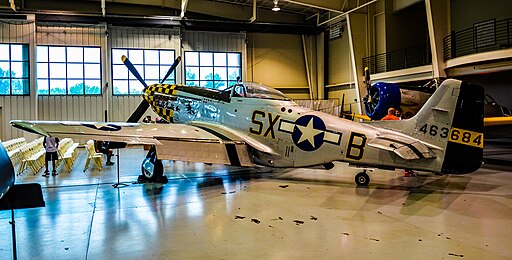A renowned figure in the United States Army Air Force (USAAF) annals during World War II, William Bradford Bailey’s extraordinary military service remains widely recognized. Hailing from Lynn, Massachusetts, Bailey first graced the world with his presence on August 20, 1918. His distinguished military career commenced on November 22, 1940, when he pledged his service to the nation in Rochester, New York, and enlisted as an Aviation Cadet in the Army Air Corps. His decision to enlist marked the beginning of a remarkable journey of service and dedication that would leave an indelible mark on the pages of military history.
Two notable crashes marked Bailey’s military career. The first occurred on August 7, 1942, at Fort Dix, New Jersey, when his P-40F aircraft was destroyed by fire during a landing accident. The second crash happened on August 11, 1943, at Martlesham Heath in the United Kingdom, where he suffered a landing accident in his P-47D aircraft, resulting in considerable damage.
Despite these setbacks, Bailey had a successful military career. He was initially assigned to the 352FS, 353FG, 8AF USAAF, and later transferred to HQ Sqn, 353FG, 8AF USAAF. During his service, he completed 186 combat missions and was credited with three air kills and three ground kills. On October 14, 1943, Bailey destroyed a Bf 109 in France. He was promoted to Lieutenant Colonel on April 8, 1944, and was reassigned to the 353FG HQ on November 2, 1944. Notably, he destroyed two FW 190 aircraft over the Ruhr in Germany on February 3, 1945.
Bailey was well recognized for his military achievements, receiving several awards, including the Air Medal with six oak leaf clusters, the American Campaign Medal, the American Defense Medal, the Distinguished Flying Cross with three oak leaf clusters, the European-African-Middle Eastern Campaign Medal, the Legion d’Honneur, the Silver Star, and the World War II Victory Medal.
The scope of Bailey’s military contribution transcended the boundaries of his traditional combat missions. His dedication and proficiency were harnessed internationally when he was dispatched to Sweden, serving in a detached capacity from May 8-23, 1945. The culmination of World War II did not signify a closing chapter in Bailey’s distinguished service. On the contrary, it served as a bridge to a new epoch in his career within the United States Air Force. His unwavering dedication and exceptional leadership skills propelled him to the esteemed echelon of Lieutenant General, a rank held only by a select few. This ascension showcased the depth and magnitude of his lifelong commitment to protecting his nation, underscoring the profound and lasting impact of his contributions to defending his homeland.
One of the most notable aircraft Bailey flew was the P-51 Mustang, known as “Double Trouble Two.” This aircraft later served in the 416 Uplands Squadron of the Royal Canadian Air Force from 1952 to 1957 before retiring after an accident. In August 2020, the aircraft was acquired from Baden, Germany, and underwent extensive restoration in Florida.
On January 14, 2012, Bailey passed away in Atlanta, Indiana, and was buried at the Arlington National Cemetery in Arlington, Virginia. His legacy as a courageous pilot and committed serviceman remains, embodying the spirit of commitment, courage, and resilience in the face of adversity.
For more insights into other distinguished military pilots, visit Aces In Action. Here, you’ll find beautiful artwork by Craig Tinder including “Double Trouble Two”. The framed canvas print even includes an actual fragment that originated from a fuselage panel of aircraft Construction No. 122-40530 (N51TH).
P-51D Mustang “Double Trouble Two” – Panoramic Aviation Art – Profile
To purchase or see similar items, visit here.Commissioned by Museums, Treasured by Collectors





Share:
Silent Defender, the story behind "Doodlebug Ace"
Soaring with the Sabres: The F-86 and the Dawn of Jet-Powered Dogfights